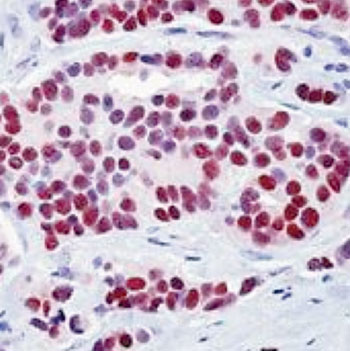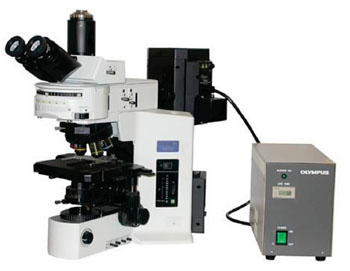Blood-Based Diagnostic Determines Hormonal Status of Metastatic Breast Cancer Patients
By LabMedica International staff writers
Posted on 12 Mar 2015
Estrogen receptor (ER) and progesterone receptor (PR) status is prognostic and predictive in breast cancer and because metastatic breast tumor biopsies are not routinely feasible, circulating tumor cells offer an alternative source of determining ER/PR tumor status.Posted on 12 Mar 2015
Circulating tumor cells (CTCs) are commonly identified in greater than 50 % of metastatic breast cancer, with enumeration demonstrating predictive implications in disease progression in patients receiving chemotherapy or endocrine therapy.
Scientists at the College of Physicians and Surgeons, Columbia University (New York, NY, USA) working with a proprietary CTC isolation platform, prospectively define hormonal status (ER/PR) using a peripheral blood sample in 36 women with metastatic breast cancer. The patients who had histologically proven stage IV invasive breast cancer were enrolled from January 2011 to June 2012. Patients were allowed to be receiving anti-estrogen treatment, chemotherapy, and/or biologic therapy.
CTCs were isolated using the microfluidic OncoCEE platform (Biocept Inc.; San Diego, CA, USA). Detection was accomplished with an expanded anti-cytokeratin (CK) cocktail mixture and anti-CD45. ER/PR protein expression was assessed by immunocytochemistry (ICC) on the CK+ cells and compared to the primary and/or metastatic tumor by immunohistochemistry (IHC). The microchannels underwent immediate manual microscopic analysis for enumeration of CTCs and assessment of ER/PR followed by taking images and X/Y coordinates recorded using Olympus Bx51 fluorescent microscopes (Olympus America; Center Valley, PA, USA) equipped with appropriate filters.
Among the 24 CK + CTC cases, a concordance of 68 % (15/22) in ER/PR status between primary breast tumor and CTCs and 83 % (10/12) between metastatic tumor and CTCs was observed. An overall concordance of 79% (19/24) was achieved when assessing CTC and metastatic tumor with the primary tumor substituted if metastatic breast biopsy not available. A test sensitivity of 72% and specificity of 100% was identified when comparing CTCs to tumor tissue. Of the seven discordant cases between CTCs and primary tumor tissue, two were concordant with the metastatic biopsy.
The authors concluded that heterogeneity of ER/PR protein expression is identified in CTCs, and primary tumor/metastatic biopsy material and hormonal status may change over time due to therapy. ER/PR ICC on CTCs from peripheral blood using the OncoCEE platform is shown to be feasible, with high concordance in ER/PR status between primary tumor/metastatic biopsy (by IHC) and CTCs (by ICC). The study was published on January 25, 2015, in the journal Clinical and Translational Oncology.
Related Links:
College of Physicians and Surgeons
Biocept Inc.
Olympus America










 (3) (1).png)





